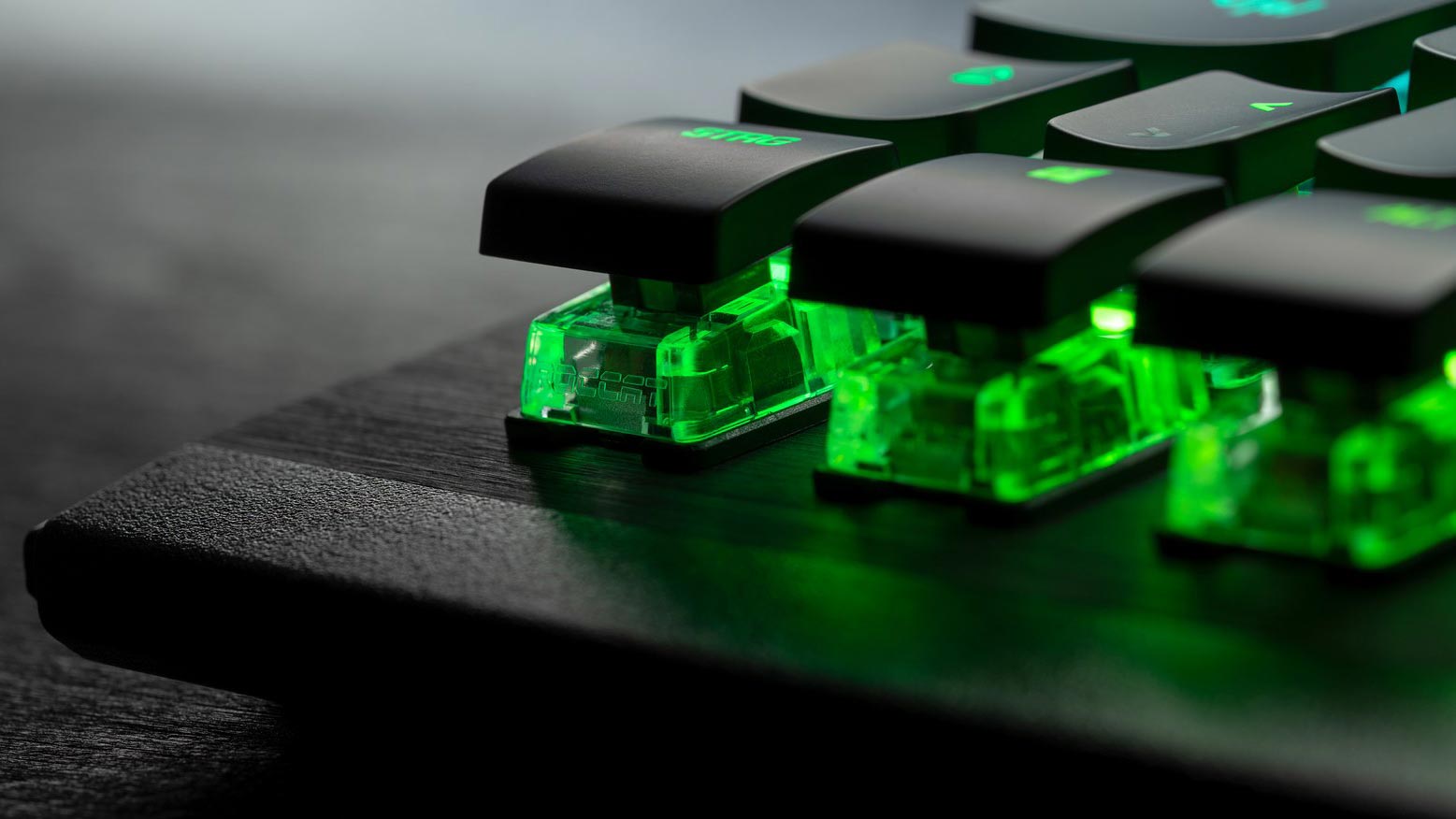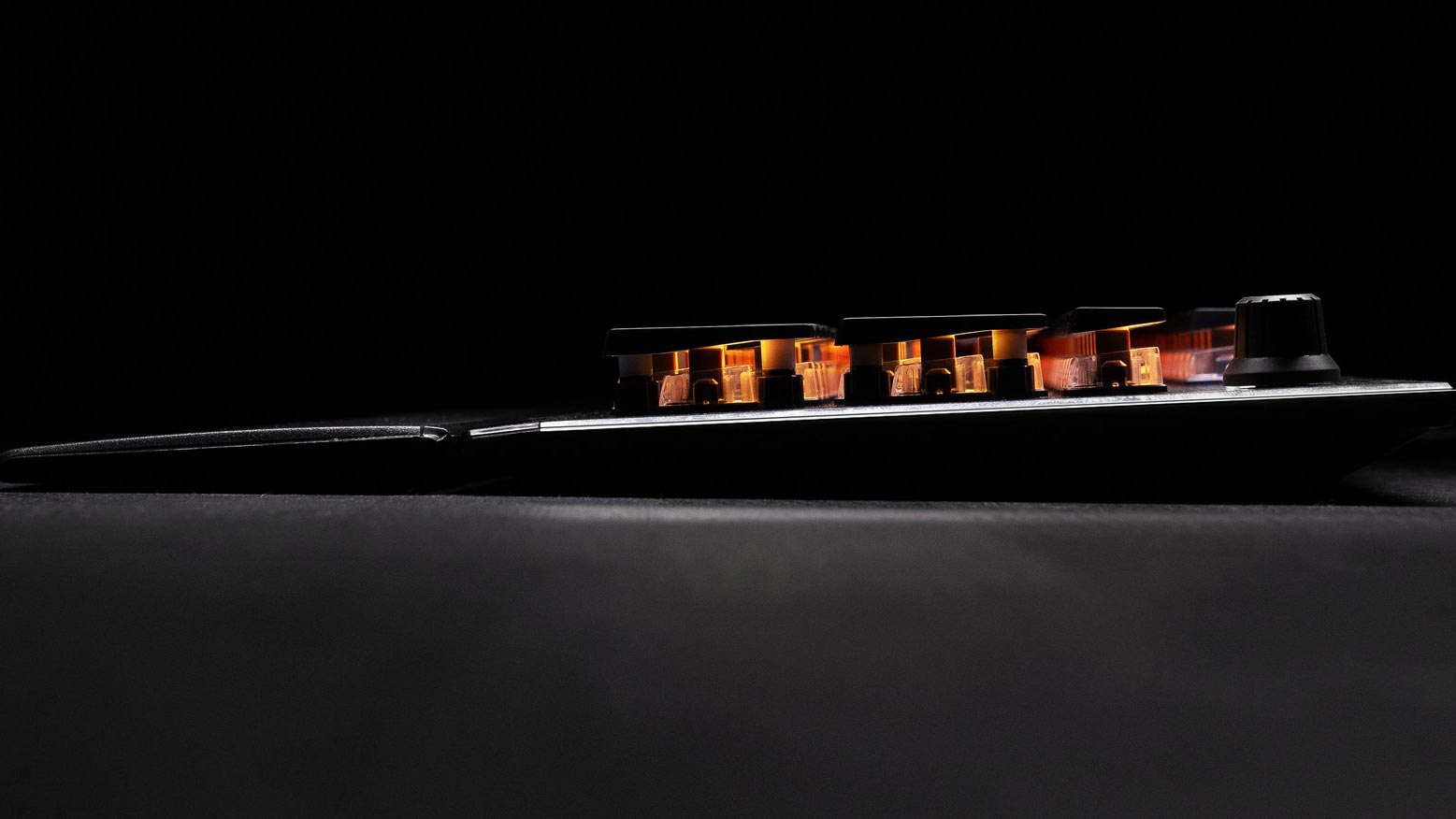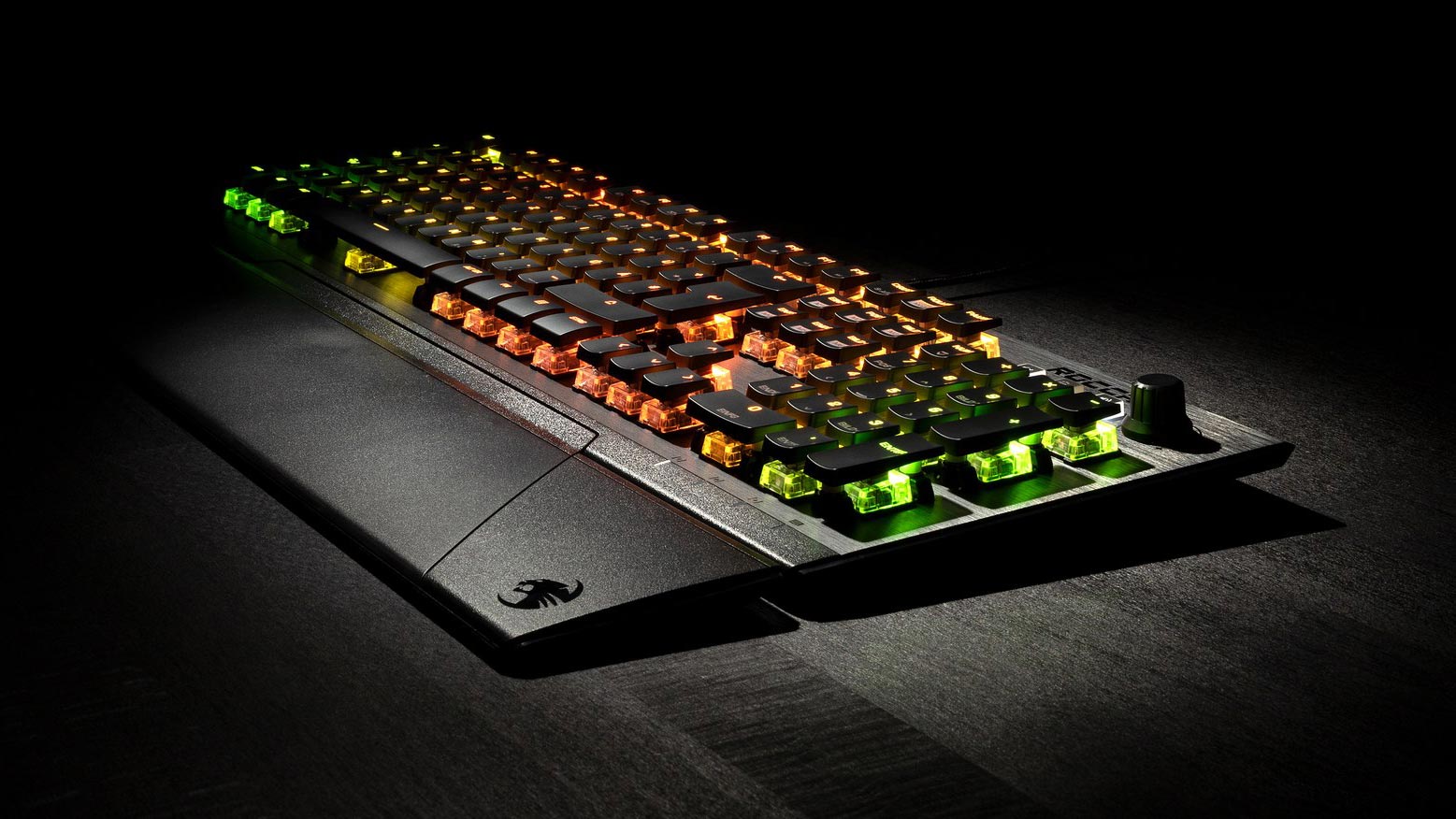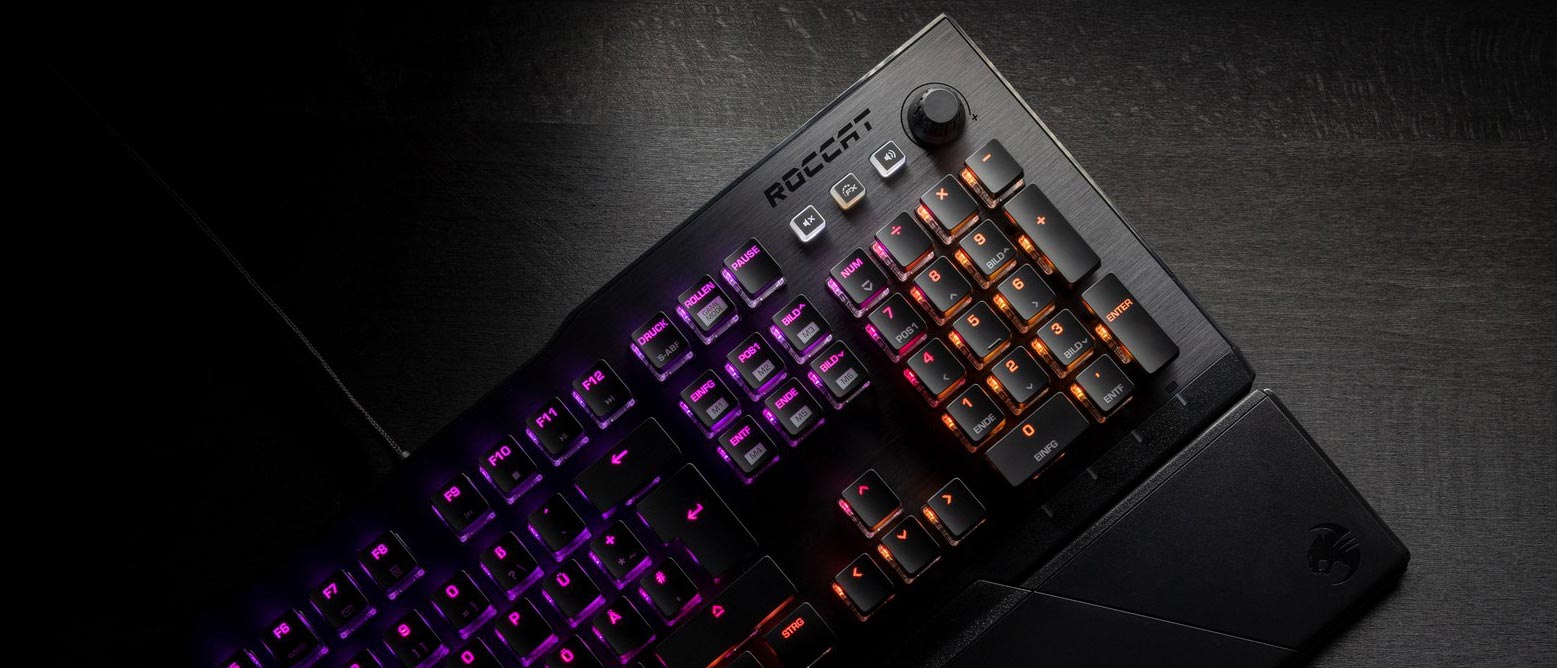Tom's Guide Verdict
The Roccat Vulcan 121 Aimo has the same design, features and price as its predecessor — and that's good.
Pros
- +
Gorgeous design
- +
Choice of key switches
- +
Great performance
- +
Beautiful RGB lighting
Cons
- -
So-so software
- -
Incomplete media bar
Why you can trust Tom's Guide
A little more than a year ago, I reviewed the Roccat Vulcan 120 Aimo keyboard ($160). With that product's gorgeous design, comfortable key switches and breathtaking lighting, I couldn't see how Roccat could make a better keyboard.
Evidently, neither could Roccat, since the Roccat Vulcan 121 Aimo ($160) is very nearly the same thing as the previous model. The Vulcan 121 Aimo has the same design, the same features and even the same price as its predecessor — and as far as I'm concerned, that's just fine. The designers at Roccat aren't fixing what ain't broken, and who could blame them?
The only way the Vulcan 121 Aimo differs from the Vulcan 120 Aimo, as far as I can tell, is that it lets you choose between two kinds of key switches: a linear red and a tactile brown. (Before, it was brown or bust.)
More options are almost always a good thing. And as the keyboard is still a joy to look at, and to use, I see no reason to give the latest version (which remains one of the best mechanical keyboards on the market) a lower score.
On the other hand, it doesn't really deserve a higher score, either, since so little has changed. But with such a good template, I imagine that Roccat could take a few exciting steps with the Vulcan line in the future.
Design
Unless you've seen the Vulcan 120 Aimo, I would wager you've never seen anything quite like the Vulcan 121 Aimo. That's because this keyboard uses ultrathin key caps on top of clear, elevated switches, unlike the recessed switches and encompassing keycaps in competing models.

With the default RGB lighting activated, the Vulcan 121 Aimo has a whole rainbow sandwiched between two thin, black strips (the chassis and the key caps), which creates a striking effect. The lighting is bright and vibrant; the chassis is sleek and slim.
The Vulcan 121 Aimo is a gorgeous device that elicited more than a few curious (and envious) stares when I set it up in the office.
The full-size keyboard isn't obnoxiously large, either, measuring 18.2 x 9.3 x 1.3 inches. Part of this is because it doesn't have an extra row of macro keys. This helps keep the price a little lower than those for competing RGB keyboards, which can range up to $180. It saves some space at the same time. Granted, if you're a heavy macro user, you can find better keyboards than the Vulcan 121 Aimo for your needs, but those who prefer straightforward, simple setups will find a lot to like here.
The device also comes with a thin, plastic wrist rest, which still does a lot to alleviate wrist tension. This accessory is detachable, which can come in handy if desk space is at a premium, but I think every gaming keyboard in this price range should come with a wrist rest. I'm always surprised when one doesn't.
There's also a set of semidiscrete media keys in the upper right corner. You don't get full play/pause, fast-forward or rewind options, but you do get a mute button and a volume dial, which are the most important keys. (The other functions are relegated to function-key shortcuts, which is fine with me; your mileage may vary.)
The interesting thing is that you can also hit an "FX" button and use the dial to adjust options like lighting and patterns. To fully leverage this, you'll need to do a little programming in the Roccat Swarm software, but it's an interesting idea that I haven't seen in any other peripheral — save, of course, for the Vulcan 120 Aimo.
Keys
When the Vulcan 120 Aimo came out, Roccat touted the keyboard's unique Roccat Titan switch. This comfortable key switch mimicked the general feel of Cherry MX Browns, providing a 1.8mm actuation point and key travel that goes a little beyond that.

That switch is still an option for the Vulcan 121 Aimo, but now you can also get a Roccat Titan speed switch, which is linear and actuates after 1.4mm. I reviewed the Brown model, so I can't speak to the efficacy of the speed switch, but it's always promising to see a company develop its own switches and give users the options they need.
As for the keys themselves, they're as comfortable and efficient as before. On a typing test, I scored about 10 fewer words per minute with the Roccat Titan switches than with my usual Logitech keyboard. But I would chalk this up to my familiarity with the Logitech rather than to any kind of flaw with the new Roccat.
Features
Every time I test a Roccat device, my biggest criticism lands on the Roccat Swarm software. It's not terrible, and it's actually gotten better over the years. But there's just something about it that never feels 100% right, whether it's the cumbersome profile-switching or the program updates that often cause the software to crash.

In any case, if you can get the Swarm software running as intended, it's got everything you need for a keyboard. You can adjust lighting patterns, reprogram keys, create macros and link profiles with individual games — up to five times, anyway.
If you want more than five simultaneous profiles, you'll have to save them and swap them out manually. This is a bit of a pain considering that on almost every competing program for gaming-peripheral management, you can run as many profiles as you want.
With the new Roccat, you can also set up sound effects, such as a typewriter or a laser beam, for each keystroke. But I feel that this would only interfere with a game's natural sound scape or provoke an office worker to fits of murderous rage.
The biggest draw of the Vulcan 121 Aimo is the RGB lighting, which works in perfect concert with the keyboard's physical design. You can program beautiful rainbow designs or stately solid colors, then impress your friends and housemates with the gorgeous illumination shining through the clear switches. If you've only ever seen RGB lighting filtered through black key caps, the Vulcan 121 Aimo is a revelation.
Performance
Like its predecessor, the Vulcan 121 Aimo works well for just about any game genre you throw at the device. Overwatch, Age of Empires II: Definitive Edition, Thronebreaker: The Witcher Tales and Final Fantasy XIV all ran beautifully with this keyboard, whether I was activating special abilities in a first-person shooter or micromanaging various battalions in a real-time strategy game. Since the key switches are solid and the layout is comfortable, there's really not much to criticize.
Just be aware that if you need a ton of macros, the Vulcan 121 Aimo may not suit you, as it doesn't have any extra keys for that purpose. You can reassign some of the function keys, which is fine if you don't mind losing a few media shortcuts; otherwise, you may need a keyboard with an extra column or two.
Bottom line
Before Roccat sent me the Vulcan 121 Aimo, I had no idea that the company was planning to refresh the keyboard. Aside from the software, nothing about the previous version really needed changing. As such, I can't complain that Roccat didn't change anything. Like the Vulcan 120 Aimo, the Vulcan 121 Aimo is an excellent keyboard with a striking design.
It's worth checking out the Corsair K70 RGB Mk.2, since Corsair's model costs only $20 more and has authentic Cherry MX key switches. On the other hand, the Vulcan 121 Aimo is much, much prettier. When you're decking out a gaming nook, aesthetics definitely count for something.
Marshall Honorof is a senior editor for Tom's Guide, overseeing the site's coverage of gaming hardware and software. He comes from a science writing background, having studied paleomammalogy, biological anthropology, and the history of science and technology. After hours, you can find him practicing taekwondo or doing deep dives on classic sci-fi.


